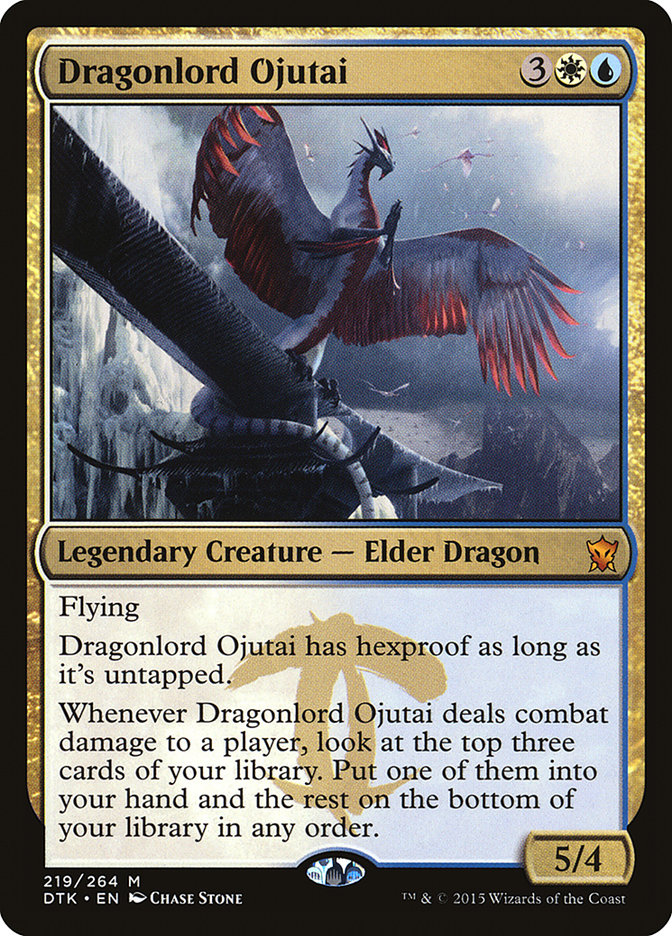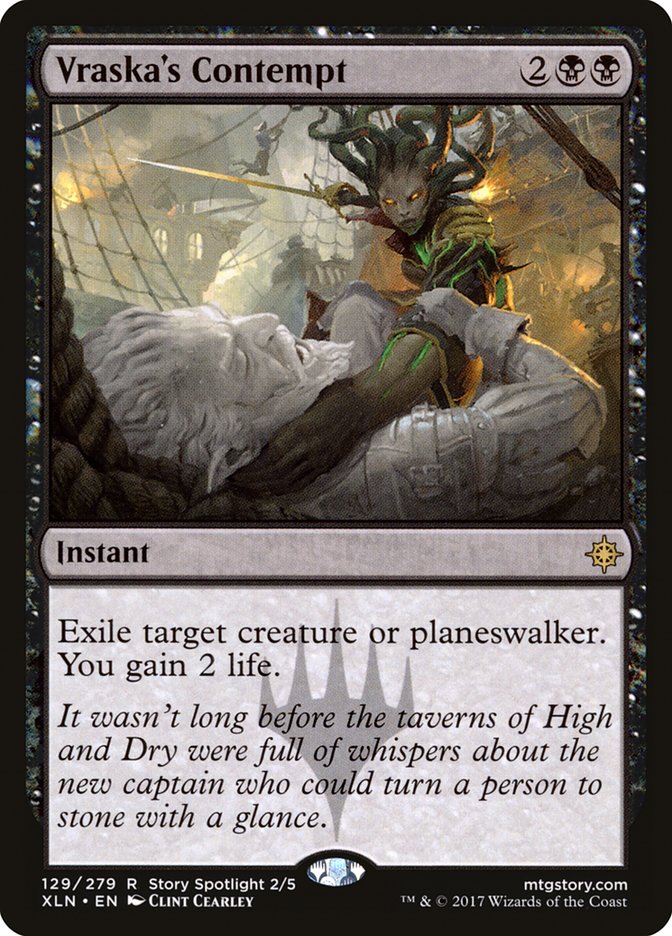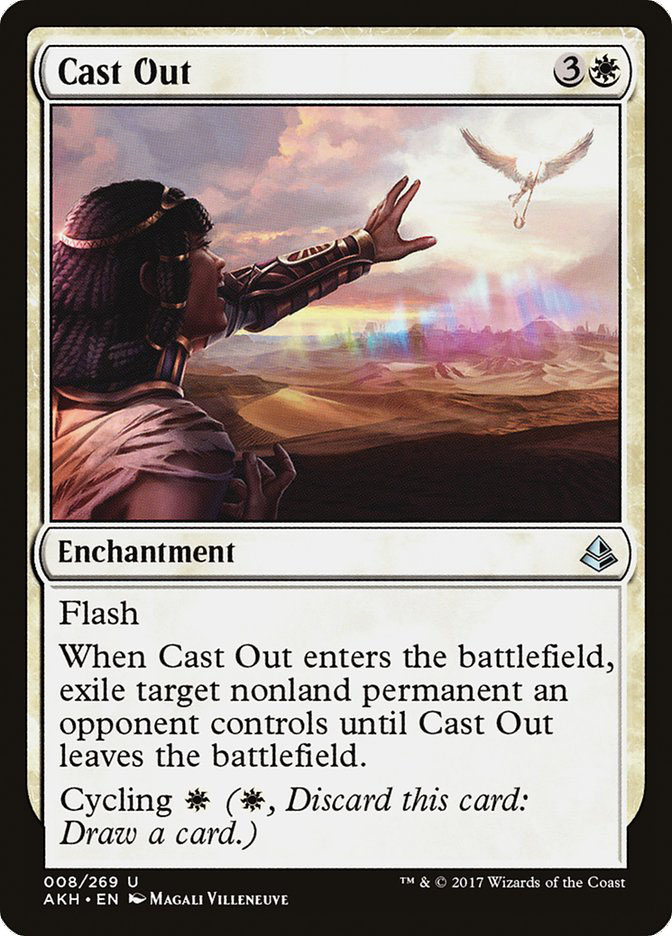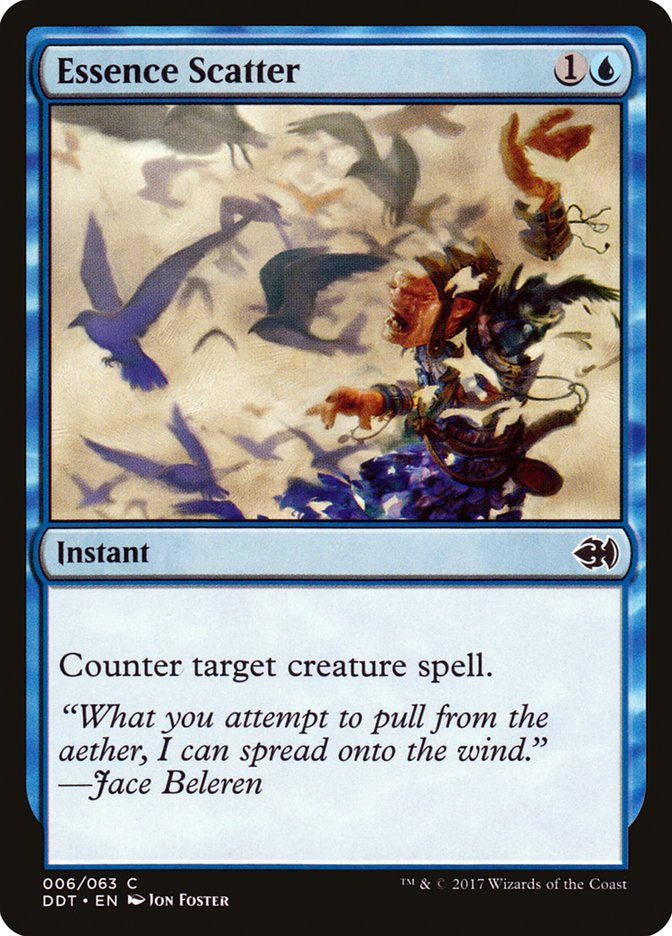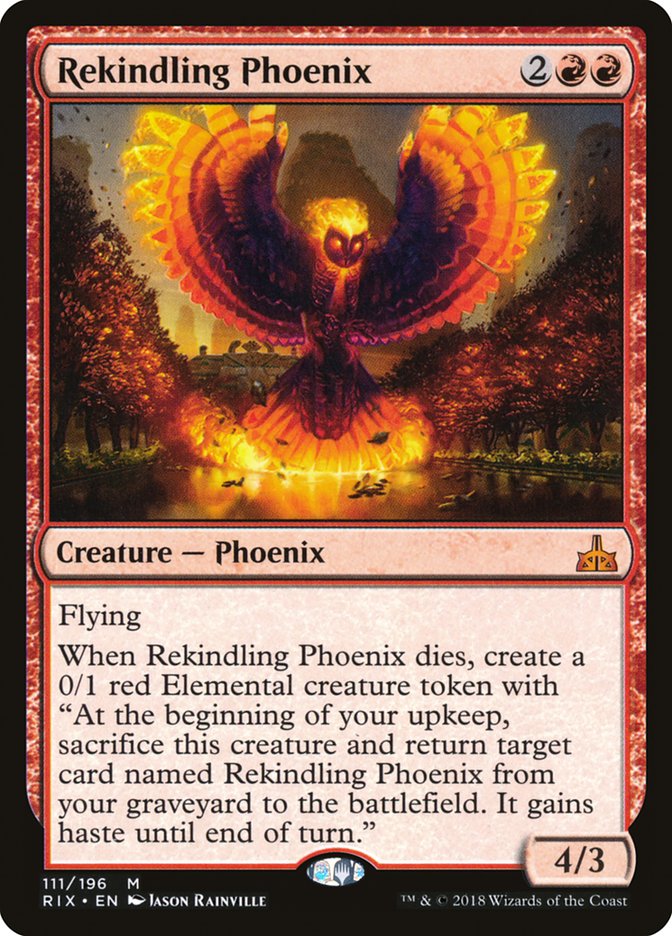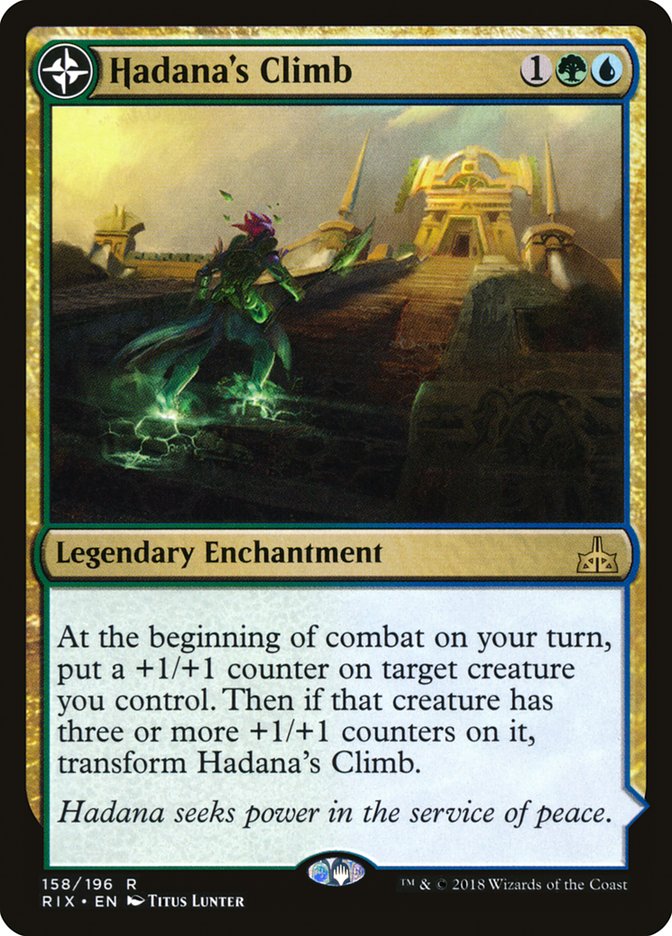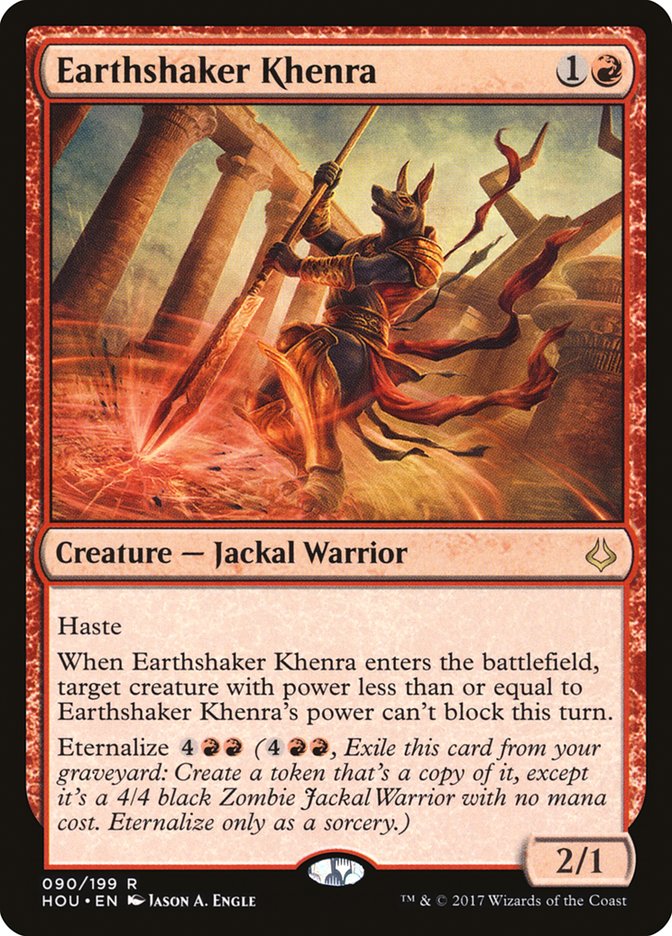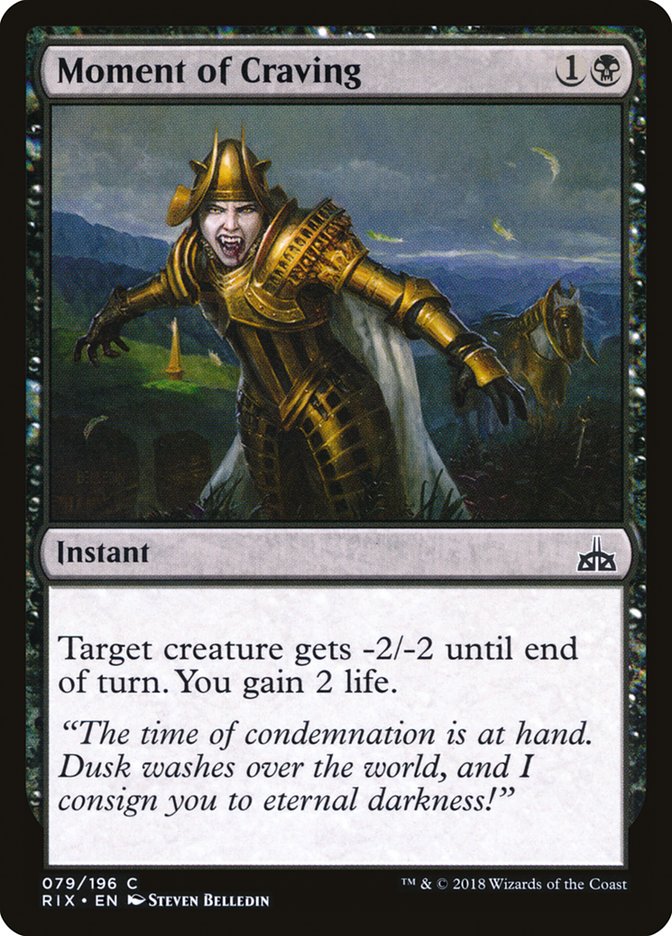I have a bad habit of not playing with the best cards. Not bad cards, mind
you–just, the very best cards, the exciting game-winning mythic
rares. When Dragonlord Ojutai was the name of the game, I did everything in
my power to play any other deck. When Elspeth, Sun’s Champion was deciding
games left and right, I let my curve stop at Siege Rhino. With feature
appearances in five of the top 8 decks at Grand Prix Memphis last weekend,
The Scarab God is everywhere in Standard these days, well, everywhere
except my decklist.
Look, it’s not some being different for the sake of being different thing.
I’m as Spike-y as they come, I promise. For whatever reason, I keep
convincing myself that playing these overpowered cards isn’t in my best
interests. And for what it’s worth, I’m sure that sometimes I’ve been
right. Yes, sometimes I’ve essentially handicapped myself by not playing
with these overpowered cards, but other times I’ve been right and have
created a substantial edge for myself by exploiting those same overpowered
cards.
That’s the key: these cards are exploitable. Aside from being absurdly
powerful, the thing they all have in common is being expensive. Not
expensive in the financial sense, although yes, they were all worth a
pretty penny in their heyday. No, expensive in the converted mana cost
sense, which is what makes them exploitable.
Expensive spells demand your whole turn to cast. Powerful, expensive spells
demand not just one full turn, but your whole game plan as well. To get the
most mileage out of your best cards, you tune your deck around creating the
situations in which they thrive. You seek to create the same favorable turn
in which to deploy your great card time and time again, but in so doing you
create a repetitive play pattern that savvy opponents can take advantage
of.
Don’t get me wrong: these cards pay you off for doing this in a big way.
When your opponent isn’t able to stop you from engineering the situation
you want, you win the game. If you want to beat these cards, you have to be
able to keep your opponent off their A-plan, but that’s easier said than
done. Their entire deck and all of their in-game planning is going towards
creating said situation, but you can’t afford to give it that same
attention.
Think of a Magic deck as some cartoonish piece of heavy machinery. Levers
and buttons everywhere, lots of gears and pulleys and tons of accompanying
grinding and clanking noises. These machines are prone to malfunctions, and
your job is to fix anything that goes wrong. But at the same time, your
rival’s machine is bigger and fancier than yours, so if both machines work
as intended, their end product will outshine yours. You can’t leave your
machine alone to go sabotage theirs though, as your machine is likely to go
up in flames in the interim. So, what do you do?
You study their machine before the big day. You become infinitely familiar
with the sounds it makes as it churns along. You learn every possible thing
that could go wrong with it and how to tell if one of those issues is about
to pop out of the woodwork. You figure out how to tell if their gears are
getting tired or if their pulleys are overtaxed.
You pick your moment, and you throw a well-placed wrench into their
machine.
The Two Kinds of Scarab Gods
In the current Standard metagame, you’ll see copies of The Scarab God out
of both control and midrange strategies. The control decks play their
copies of The Scarab God in a much more scripted, and thus exploitable manner, so that’s going to be our focus.
Creatures (6)
Lands (26)
Spells (28)

The above list is pretty typical of the control shells people are playing
right now. Froehlich and Vance might have lost in the top 8, but U/B
Control was everywhere at Grand Prix Memphis. Some versions will
splash a third color, either white for Settle the Wreckage or red for
Abrade and/or Harnessed Lightning, but the idea is the same regardless.
Maintain a clear battlefield in the early game, keep the cards coming with
Glimmer of Genius and/or Hieroglyphic Illumination, utilize Torrential
Gearhulk to pull ahead, and slam the door shut with The Scarab God in the
late game. As plans go, this one is pretty airtight.
Dealing with The Scarab God out of this deck can feel hopeless. You’ve
chipped in for some damage where you could, picked your spots well to
double-spell through counter magic, played around Torrential Gearhulk
blowouts like a champ, and finally have managed to grow a reasonable
battlefield that should close the game out in just a couple turns. And then
they slam The Scarab God.
All the work you did throughout the entire game, undone by a single card.
The precious two creatures you’ve managed to protect look foolish next to
the undead hordes that The Scarab God creates. This game is over.
There’s two kinds of Scarab Gods out of the control decks. The good ones
like from the last example, where it single-handedly takes over a
simplified battlefield. And then there’s the desperation Scarab Gods, the
“this game has spiraled out of control and I just need to slam Scarab God
on turn 5 and hope it stabilizes the battlefield” kind of Scarab God.
You can’t win the games where everything goes perfect for them. That’s
understandable. When they get to play The Scarab God onto a nearly empty
battlefield with four mana up, you are extremely unlikely to win. You
shouldn’t try to win those games.
To beat these decks, we need to force them to play desperation Scarab Gods.
Not letting your opponent play the good kind of Scarab God actually has
very little to do with The Scarab God itself. After all, The Scarab God
itself isn’t doing anything to create the situations it’s good in. It
can’t, it’s not even supposed to be played until then!
You force desperation Scarab Gods by just playing good Magic against the
control deck. Make something go wrong with their game plan. Don’t let them
just trade card for card every turn forever. Ride early threats to a
consistent battlefield advantage. Punish their stumbles with sticky
threats. Every deck will have a different plan for making something go
wrong for the control decks, and you need to execute on that plan to have
any chance against The Scarab God.
Honestly, in the finishing blow role that the control decks want to use it
in, The Scarab God isn’t anything special. Yeah, it wins the game in short
order at basically no risk, but so did Pearl Lake Ancient and every other
control finisher we’ve seen over the years. The thing The Scarab God does
different is just flat out steal games where things didn’t go
according to plan. It’s that ability of The Scarab God that we can work to
mitigate.
Setting Up to Beat a Desperation Scarab God
So, you did it. You got a fast start and put your opponent under so much
pressure that they were forced to cast The Scarab God on turn 5. What now?
Do: Play Clean Answers.
The easiest way to win these games is to Vraska’s Contempt that Scarab God
right then and there and get a free swing with your team in. This sequence
is the whole reason that control decks don’t like to play The Scarab God on
turn 5: it opens them up to losing the game on the spot if you have the
answer. So, you should probably have some answers in your deck if you’re
trying to take the game to turn 5 or later.
Aside from Vraska’s Contempt, the best clean answers to be playing right
now are Cast Out, Ixalan’s Binding, and Essence Scatter. Essence Scatter in
particular is great right now, as it doubles as an answer to Torrential
Gearhulk. You know a format’s in a good spot when Essence Scatter is better
than Negate against the control decks.
Don’t: Play Too Many Clean Answers.
But don’t get too excited about being able to answer The Scarab God. If you
overload on answers, you won’t be able to force them to play it in
desperation mode. It’s really hard to get your control opponent to feel
threatened when you’ve drawn two answers to The Scarab God, answers that
just sit in your hand, unable to help you put them under pressure.
The best answers to play are the ones that do something else. That’s why I
like Essence Scatter so much, as it also stops them from pulling ahead with
a Torrential Gearhulk play. Cast Out is also good for this reason, as you
can cycle it early if you need more pressure.
If your answers only deal with The Scarab God and little more, three is the
number to play. You don’t necessarily want it in your opening hand, and you
definitely don’t want to draw two, but you do want to find one when you
need it. If you have access to the class of answers that can also do
something else, you can safely bump the number you play up to five or so.
It’s still not free to play these cards, and you still don’t want too many,
but you can play more than three.
Do: Have a plan for when you can’t answer The Scarab God.
Because you can’t afford to play enough answers to guarantee that you have
one when they go for The Scarab God, you need to have another avenue of
attack. In early turns, the only stabilizing factor of The Scarab God on
the turn it’s played is it’s 5/5 body. Let’s make that no good.
Notably, The Scarab God lacks flying. Coincidentally, a flying offense was
the A Plan of both the finalist decks at Grand Prix Memphis. G/R Monsters
leans heavily on Rekindling Phoenix and Glorybringer, and The Scarab God
sure can’t block either of those creatures. Sultai Constrictor (
Snakes and Ladders
) has no creatures with flying in the entire 75, but it sure does use
Hadana’s Climb to accomplish the same thing.
Even if you don’t have access to evasion, you can make The Scarab God’s
body look unimpressive. Hazoret the Fervent attacks through The Scarab God
with ease. If you have a Carnage Tyrant on the battlefield, you probably
don’t care too much about a The Scarab God that can’t activate its ability.
But things aren’t always that good sitting across the table from The Scarab
God. Sometimes, the best we can do is have a single big creature that
forces a trade with our opponent’s Scarab God. This can be an okay state of
affairs for us despite The Scarab God’s recursive abilities. The key is to
have a bunch of small creatures that can get meaningful damage through
while the titans of the battlefield trade off. Then ideally we have a fresh
dumb ground brute to replace our fallen champion with, and our opponent
will find themselves in that same desperate scenario next turn, up a land
perhaps but down a sizable chunk of life. That might be game right there.
And finally, let’s not understate the value of non-clean answers to The
Scarab God. You don’t have to live in fear of them bringing The Scarab God
back in the end step. A simple Struggle can clear the way for a meaningful
attack, and your opponent will just be in the same situation again next
turn. Removal that doesn’t exile isn’t ideal against The Scarab God, but
it’ll do in a pinch; you just have to be sure to have the speed to back up
these tempo plays.
Don’t forget to use effects like these in the end step when you don’t want
to attack. By killing The Scarab God in the end step, you delay its
inevitable return to their hand until their end step and stop them from
deploying it again for a whole extra turn cycle. That extra turn can be a
valuable opportunity to sneak a few more points of damage in and clinch the
game. One of my favorite tricks is to jam a four power attacker into The
Scarab God and then wait to finish it off with my Walking Ballista until
the end step.
Don’t: Force them to play The Scarab God when you can’t beat it.
This is a tricky one. Sometimes, you can’t beat The Scarab God if they play
it. You just have some reasonable but not impressive ground creatures on
the battlefield, creatures which will be forced to meekly stop at the stop
sign that is The Scarab God. You’re really hoping they decide against
slamming that Scarab God on turn 5 and you get some more time to find an
answer or another plan of attack.
The good news is that your control opponents also don’t want to play their
Scarab God on five. Doing so is scary. What if you Vraska’s Contempt their
Scarab God? What if you just fly over it with a Glorybringer? If they don’t
feel forced to make such a risky play, they won’t.
So feign weakness. Refrain from deploying that third threat if it would
make your battlefield a hair too imposing. Don’t represent lethal, because
if you do they will go for their last resort play. It doesn’t matter how
well you represent or bluff an answer to The Scarab God; if you force them
into a situation where they need you to not have it, they’re going to
simply cross their fingers and hope for the best. Slow yourself down and
bide your time until you figure out a way to beat The Scarab God.
Do: Avoid making The Scarab God good if it’s going to be sticking
around.
Sometimes, despite your best efforts to appear weak, they go ahead and play
The Scarab God early anyway, and there’s not a thing you can do about it.
It trumps your battlefield and you can’t stop them from untapping with it
on the battlefield, but the game isn’t over yet, so don’t panic.
Often, this situation comes about from your opponent having an
exceptionally weak hand. Your battlefield isn’t particularly threatening,
but their draw has developed so poorly that they feel severely threatened
by it anyway. You need to keep the game moving and play to a longer game
where their bad draw loses, but you need to do so in a way that doesn’t let
their Scarab God take over the game despite their other cards.
Rule number one in these spots is to avoid trading. If you don’t let your
creatures hit the graveyard, their Scarab God will just be a 5/5. 5/5s are
good, but every creature oriented deck in Standard can do better than that.
The good news here is that The Scarab God is so good that it has
cannibalized the format against itself. Because answering The Scarab God is
necessary, a high priority has been placed on removal that exiles its
target. This can make it hard for these control decks to actually get
creatures into the yard to reanimate with The Scarab God.
If you find yourself up against a long-term Scarab God, avoid playing out
creatures that die to their situational non-exile removal. When possible,
don’t give them a Fatal Push or Moment of Craving target. Sure, you could
play that Earthshaker Khenra, you have nothing else to do with the mana.
But then they hit it with a Moment of Craving and reanimate it with their
Scarab God. Now they have a 5/5 and a 4/4, and all you had to do
to prevent this was not give them something to kill.
There’s some cards we can play that will incidentally help us in these
situations. Scrapheap Scrounger is one I’ve liked a lot, as keeping a
Scrapheap Scrounger in your graveyard and two mana up can effectively
counter their activation of The Scarab God. And if you do end up bringing
back that Scrounger, remember you can hold priority to double or triple
activate to empty your graveyard as much as possible. Lots of decks can fit
Scavenger Grounds into their mana base for free, and that card is excellent at turning The Scarab God into a vanilla 5/5.
Do: Combine these tricks when appropriate.
Your best results will come from using a “little of Column A little of
Column B” approach to these tricks. Let’s say your opponent deployed that
desperation Scarab God on turn 5 or 6. Your battlefield was decent but not
amazing, and it did effectively end your attacks. You opt to double
Lightning Strike it in your end step, and they pass back to you without
doing anything, reclaiming their Scarab God at the end of their turn.
You want to begin your turn by attacking, and then if their life total is
still not in the critical range, you should start preparing to fight a
long-term Scarab God. Don’t let them get a creature in the graveyard this
turn via countering a spell, simply pass back and resolve your creatures
after they tap out for The Scarab God again.
Or maybe you have a Glorybringer that you played after they tapped out for
The Scarab God. You can’t answer that Scarab God, but you’re executing the
plan of having another way of beating it. They’re at eight right now during
your main phase, and you have a second Glorybringer in hand. Should you
cast it?
No! Sure, if everything goes well you’ll win the game this turn. But
everything won’t go well. You didn’t give them an opportunity to counter
your Glorybringer, and they could very easily have a counterspell. If they
do, not only will you not kill them, you’ll give them a flying
blocker to answer your Glorybringer. That’s bad.
In the end, understand that you should be thinking about how you can deal
with The Scarab God from the second you see them play that first Drowned
Catacomb, not from the second they put The Scarab God on the stack.
Powerful cards warp formats and shape games, and you need to let your
opponent’s powerful cards shape your games from turn 1 if you want to
maximize your chance of beating them.


